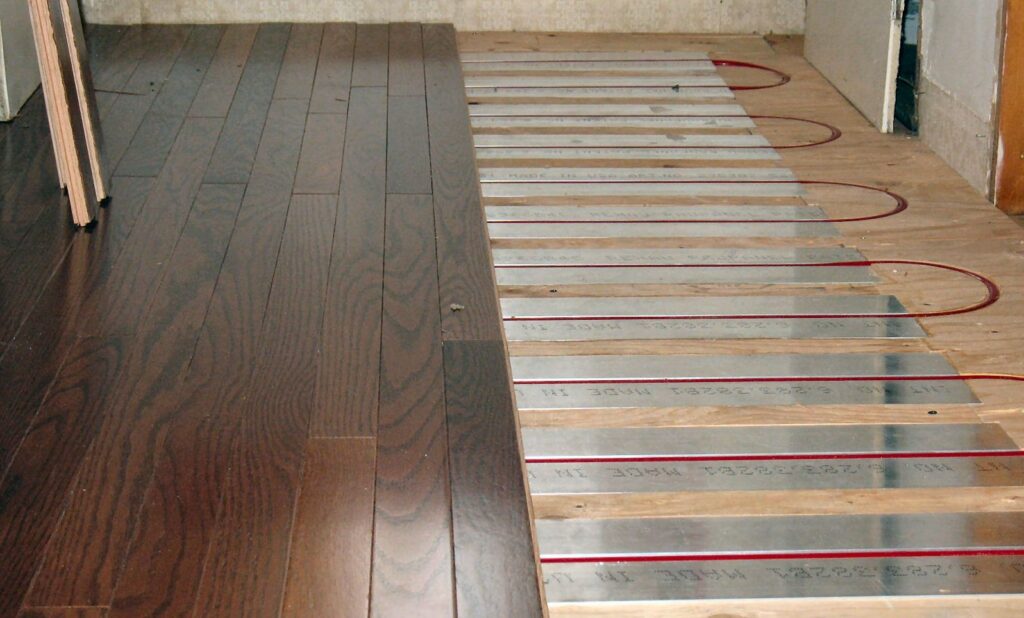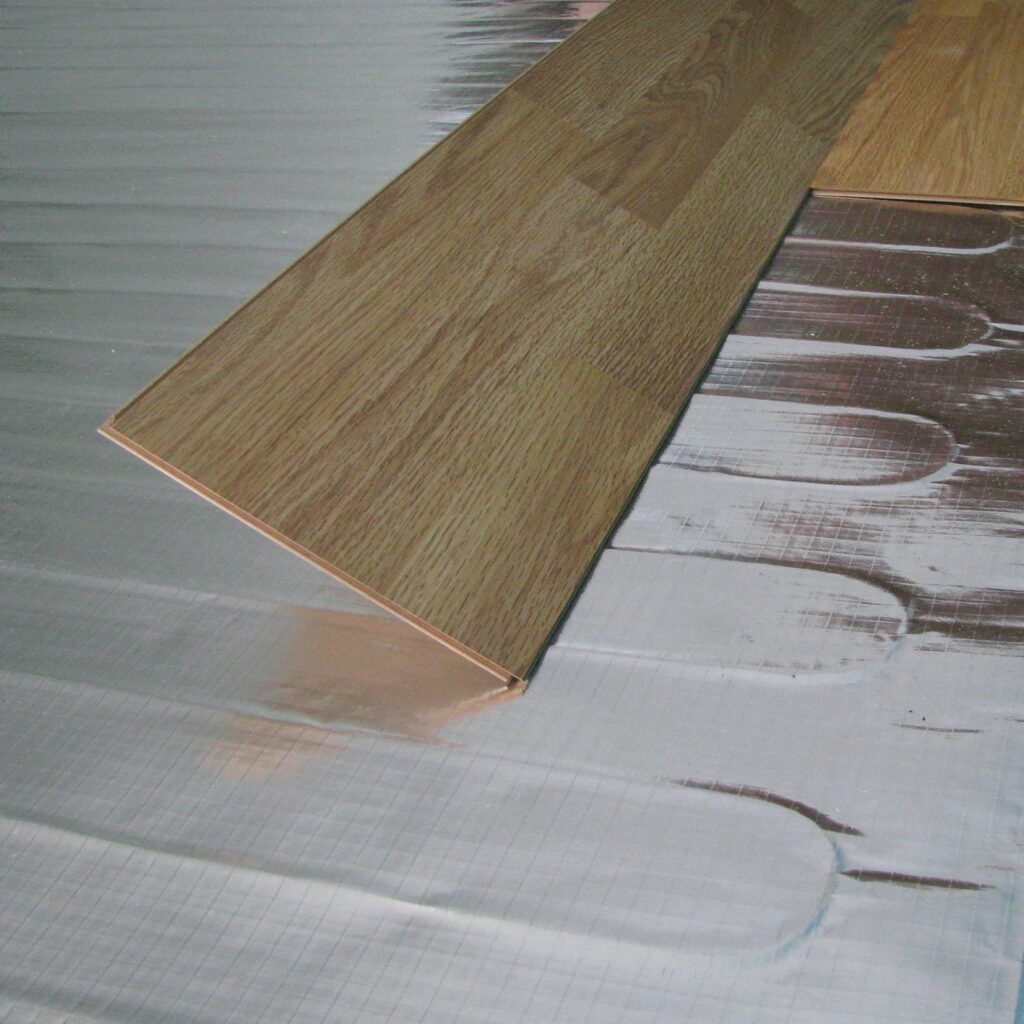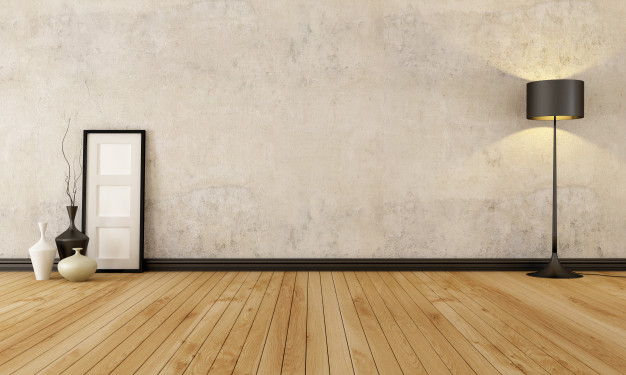If you were asked to picture ideal flooring for your household – what you would picture? For most people, it would have to hardwood. In more ways than one, hardwood is the best option for virtually any living space. It’s fairly easy to clean and maintain and it doesn’t stain easily unlike carpet for instance. Also, a traditional, classic look gives the room a more luxurious feel than the rest of the options out there. It’s not uncommon for classic, hardwood floors to last more than 50 years without ever having to be replaced or refurbished. All in all – they really do feel like a perfect option for any home.
Even with all of that being the case a lot of people are still on the verge of whether the hardwood is the right choice for their household. Lately, the main reason behind that thought is the fact that they don’t really work with modern designs and styles. The minimalist and modern trend tends to stay away from the traditional, old-fashioned flooring options – which wood undeniably is. However, it’s all about the look and feel of a room. One thing that has gotten really popular over the last decade or so is floor heating. Because of that, one of the most commonly asked questions became – can you install floor heaters under the hardwood? Well, let’s find out.
What Is Floor Heating?

One of the latest and greatest trends in modern housing, floor heating, has already solidified itself as one of the most sought after options in most modern homes. Now, for those of you who aren’t familiar with it – there are two ways in which floor heating can be installed. Depending on your preference you can choose either an electric-based or a water-based system. Naturally, it goes without saying, this isn’t just a method of heating up the ground you walk on – it’s a system that radiates heat and warms up your entire home.
Now, to install either of the previously mentioned options, the flooring will have to be removed. This is also one of the reasons why people are worried about switching over to this form of heating. Not only can the installation get expensive, but they fear their expensive hardwood will get damaged in the process. However, according to www.futofolia.hu, one of the most reputable companies in the field – that is not something you should be worried about. There’s virtually no chance of any damage being done to the floors if the job is being handled professionally.
Can You Install It Under Hardwood?

So, can you actually do it? To put it simply – yes, of course, you can. Although most of the concerns people have are reasonable, there’s nothing to worry about to be completely honest. Floor heating can easily be installed under virtually any type of flooring. Naturally, some are better suited than others and there are some rules to be followed, but all in all, every material can be worked with. However, there are some things to pay attention to, several rules to follow, and some things to avoid as well, so let’s talk about that a little bit.
When it comes to the relationship between heating and hardwood floors, there are some things you should steer clear of if you want the optimal results. First of all, the actual material of the decking is to be considered. Planks that are too dense or too thick may be causing some issues. Wood is a great conductor, but at the same time, it’s also a good insulator. So a board too thick or dense could cause some interference. Also, a low-quality flooring, the one that’s prone to swelling or shrinkage is also not recommended to be used in these cases – for obvious reasons.
In addition to the material being the right quality, thickness, or density, you also want to consider a floating floor for best results and easier installation.
Another thing to keep in mind is – you shouldn’t nail the hardwood boards. Nails, or any kind of metal for that matter, could cause interference with the heat source, especially with the electric kind. Glue is also not recommended. Even though the heat won’t damage the floorboards, it could melt the glue and cause damage that way. Your best option would be interlocking planks, the ones that don’t require glue or nails to be held in place.
Advantages Of Floor Heating

Now, we’ve said a few things that may come across as scary, however, you should definitely consider floor heating for your household. There are many advantages to this method compared to others. First of all, the wiring or piping network underneath your feet is evenly distributed throughout the room so you can be sure that every nook and cranny of your home will be evenly warm. It’s obvious why that is superior to traditional radiators or other types of heaters. In those cases, you have small, localized heat sources that are too hot to stand next to and at the same time not powerful enough to warm up an area far away from them. With the system we’re talking about, you don’t have that issue.
As far as energy efficiency goes, it’s been shown on numerous occasions that the floor heating is up to 20% more efficient than the rest of the options you have. This is simply due to the fact that the heat is evenly distributed throughout the whole house, at all times, so there are no ‘spikes’ where your system has to work extra hard to make up for the idle time since there isn’t one.
How Is It Installed?

Finally, believe it or not, you could DIY the whole process, but we’d recommend going the professional route unless you have some experience in the matter. It’s a pretty easy and straightforward installing process. The floor is pulled up and the piping or wiring network is installed underneath. Usually, it takes no more than a few days for all of it to be over.
As you can see, it’s perfectly fine and safe to place floor heating under hardwood as long as you follow some basic rules. To be completely honest, it’s not just fine – it’s more than that. If you have the means and the will to take on this project – you probably should.




